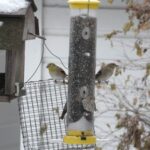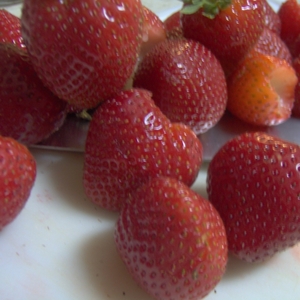I love weeping willow trees and have often wanted one in my yard. My dad liked them too, but in other people’s yards. He was worried that the roots of the willow tree would find their way into the sewer lines and plug them up. We found out the hard way what not to plant around or over water lines. I remember a wonderful grape vine that grew outside the kitchen window. In the summer time, it would bring shade to the west side window and we could watch the birds come and eat the grapes. But I still yearn to plant a willow and take my chances.
Planting a weeping willow or a weeping cherry tree is a way to add grace to your landscape. These trees are hardy in U.S. Department of Agriculture zones 4 through 8. Plant and grow willow or cherry trees in containers if you live in a colder zone to ensure survival. The weeping willow or cherry trees are fast growing trees with cascading branches, but they are a short-lived tree, with a life span of about 30 years. Although these trees look similar, the cherry trees bloom in the early spring and their flower colors range from white to light pink.
Pick the Right Location
It’s important to find the right location, and yes, keep well away from water and sewer lines. Also the area should have full or partial sunlight. Weeping cherry trees grow to heights of 20 to 30 feet and they have a spread of 15 to 25 feet. Weeping willow trees can grow up to 70 feet and have a spread of 70 feet.
Dig the Hole
When you dig the hole, make it twice as wide and twice as deep as the container. This is done as early in the spring as possible to ensure that the roots of the weeping willow or cherry tree are established before winter. Use the edge of your spade or shovel to loosen up the bottom and sides of the hole. This helps the roots to go deeper in the ground.
Amend the soil with a shovel or two of compost. All varieties of weeping willows grow better in soil that is loose. Hook up the water hose and fill the hole with water. Wait until the water drains out of the hole before planting the willow into it. The water will go deep into the ground and provide moisture for the willow trees to grow.
Remove the weeping willow or cherry tree from the container. To help you remove the tree from the container, lay the pot on its side and grasp the tree by the stem close to the soil. If it does not come out of the pot easily, then if the tree is not very tall, tip the pot upside-down and bang the edge of the pot on the edge of the table. Just be careful to only hit the rim of the pot on the edge of the table and not your tree. That would not help your willow tree to grow. Sometimes the root ball just refuses to come out. If this is the case, then pick up a utility knife and cut the container away. Just be careful to not cut so deep that you cut the roots of your tree.
Planting the Willow in the Ground
Okay, now you are ready to plant it into the ground. But wait. Before you put your tree into the ground, push some of the amended soil into the hole. Place your willow tree into the hole and see where the top of the root ball is. If it is lower than the ground, put more soil into the hole. You will know that you have enough soil when the top of the root-ball is slightly higher than the ground, but no more than a 1/2 inch difference. Don’t worry because the ground under the rootball will settle. When you have enough soil in the hole, place the root-ball into the center of the hole.
Back fill the soil into the hole around the roots and then tamp the soil down with your hands or foot. Weeping willows love water, so after the tree is planted and the ole is filled, you need to start watering. Turn the water hose on a slow flow and allow the water to run. Even though weeping willow trees love water, they don’t like to have their roots in soil that remains soggy all the time. It is important to keep the soil moist. One way to tell if you are watering too much is to look at the leaves. If the leaves droop, that is a sign that you are either watering too much or not enough.
Pull the weeds. Weeping willow and cherry trees do not compete well with weeds. Keep the area within a 2- to 3-foot area around the willow’s trunk clear of weeds. Put a layer of mulch over the ground to help retain moisture and control weeds.
Sources
Landscaping Ideas Online: Weeping Cherry Tree
American Horticultural Society A to Z Encyclopedia of Garden Plants”; Christopher Brickell; 2004
North Dakota State University; Questions on: Willow





